Angus adding resilience and profitability
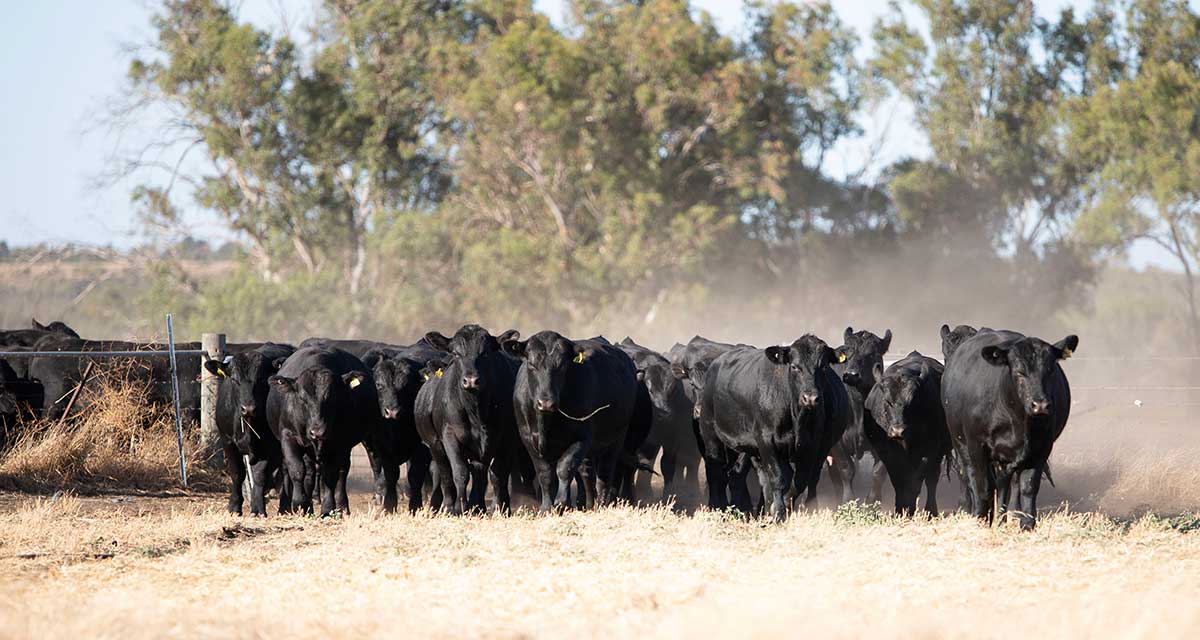

The Dewar Family have been farming in the Guilderton area in Western Australia since the 1840s.
For Joe Dewar, farming in the area is obviously in his blood, having grown up on their family farm. Following on from his family before him, Joe has continued the family legacy with his wife Jessica and their two children, William and Wesley.
Alongside his father, Joe has built their business from 40 breeders to how it stands currently as an Angus seedstock and commercial Angus and Angus influenced operation, as well as a Merino sheep operation.
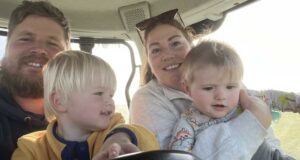 The Dewar’s business operates over approximately 12,000 hectares across various locations from North Dandalup and Coorow in southwest WA. With the majority of the country classed as light coastal, the home base of the operation is located on the coast of the Gingin area, with their seedstock operation, Ardcairnie Angus and breeder operation grounded there, with their further away properties are utilised as their runoff blocks.
The Dewar’s business operates over approximately 12,000 hectares across various locations from North Dandalup and Coorow in southwest WA. With the majority of the country classed as light coastal, the home base of the operation is located on the coast of the Gingin area, with their seedstock operation, Ardcairnie Angus and breeder operation grounded there, with their further away properties are utilised as their runoff blocks.
“We like the risk management of diverse income streams that comes by producing stud bulls, beef cattle, lambs and wool,” said Joe of their mixed enterprise. “Also, there is increased pasture utilisation with multiple species that increases our profitability.”
The family first started integrating Angus into their farming business in the late 1990s, citing the wide variety of genetics available in the breed for the adoption of it into their enterprise, gradually transitioned the herd towards straight bred Angus from that point. The family purchased Ardcairnie Angus in 2020, adding to their existing business.
The family now have a straight Angus cow herd, with the majority mated back to Angus bulls and the bottom end of the female portion joined to a terminal euro sire for feeder calf production.
The operation has approximately 400 stud and 500 commercial females and retains and mates approximately 50% of their heifer drop each year, season dependant.
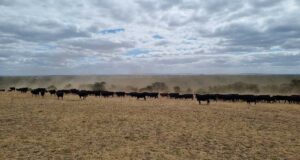 Cows are generally joined for 10 weeks annually, with heifers joined in a slightly shorter window. Heifers are joined at 15 months of age to calve down as two-year-olds. Joining occurs from July to September for an April to June calving. Long time conception rates for the operation sit at 88% for heifers and 92% for cows.
Cows are generally joined for 10 weeks annually, with heifers joined in a slightly shorter window. Heifers are joined at 15 months of age to calve down as two-year-olds. Joining occurs from July to September for an April to June calving. Long time conception rates for the operation sit at 88% for heifers and 92% for cows.
The family also utilise an artificial insemination (AI) program on both their stud and commercial heifers and approximately half of their stud cows.
“We have only been doing the AI program for about 3 years and averaging a touch over 50%, which we are pretty happy with considering some of the seasons the cattle have endured,” said Joe.
“We have done some embryo transfer (ET) work with quite good success. We had 57 ET calves this year and are looking to ramp that up going forward.”
When it comes to retaining and culling animals within their operation, failure to conceive or raise a calf, temperament, significant structural issues and poor calf weaning weight are all taken into consideration in their keep/cull decisions.
Females are pregnancy tested, with dry cows culled from the herd. The family run their cattle in commercial conditions without additional treatment, and having maintained fertility as a paramount, 30 years of culling on this trait in their female herd has meant that they have been able to achieve their goal conception rates without needing to outlay significant resources into their females in order to get them in calf.
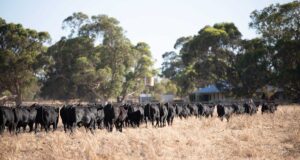 “We aim to breed low maintenance, fertile cattle that can handle variable seasonal conditions and produce calves that will still grow well and perform in a feedlot,” said Joe.
“We aim to breed low maintenance, fertile cattle that can handle variable seasonal conditions and produce calves that will still grow well and perform in a feedlot,” said Joe.
The Dewar’s sell calves as backgrounders or feeders, market and season dictating. They then grain feed the balance themselves and consign them direct to supermarkets or butchers. Their grain fed calves are MSA graded.
“We have sent quite a few cattle on the live export boats in the past, but this has tailed off significantly over the last few years,” said Joe. “We don’t focus on a set market but try to breed cattle that will suit a wide variety of buyers, allowing us to keep our options open.”
The seedstock portion of their business sees the family host an annual bull sale, selling rising two-year-old registered Angus sires.
When considering the key drivers of production and success for their business, Joe said, “The key drivers here are cows being able to raise a good calf under adverse conditions at times, then get back in calf in a timely fashion.
“The calves need to be consistent with plenty of growth potential to enable them to suit a variety of markets, so that when things don’t go to plan, we aren’t pigeonholed into a specific market.”
When looking for bulls for their herd, or considering genetics to integrate into their business, there are a number of parameters the business focuses on.
“I look for good phenotype and structural correctness first with a pedigree that is consistent to try and minimise the spread in our calves,” said Joe.
“Temperament is very important, and I like to see good growth figures with the mature cow weight tailing off a little indicating early maturity.
“I don’t mind a bit of birthweight as we have larger frame cows. Our season keeps the calf weights down naturally and the bigger calves tend to weigh more at weaning.”
He continued, “I like to see a reasonable scrotal circumference as fertility is very important to us and we then just try and keep the rest of the traits not too far below average. We aren’t looking for top 1% outliers, but we are looking for above average consistent performance.”
Taking into account their country type and the seasons they see across their properties, the Dewars manage their land in accordance with the environment, which also determines the type of animal they are producing.
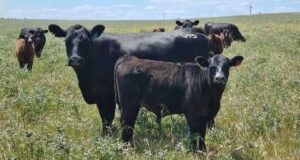 “In an average year on our breeding blocks we get four to five months of green feed and then the rest of the year the cattle are generally on dry pasture with no supplementary feed,” said Joe.
“In an average year on our breeding blocks we get four to five months of green feed and then the rest of the year the cattle are generally on dry pasture with no supplementary feed,” said Joe.
“Stocking rates are low, and it takes a certain kind of cow to do well on this country – but with the right genetics and management this country will produce good cattle.”
“Angus have such a huge advantage with the volume of data collected and the wide variety of genetics available that suit multiple environments and markets,” said Joe of the future of Angus and it’s use in their operations.
“If we as stud breeders remain focused and disciplined and continue to provide bulls to commercial herds that keep them profitable whilst also adding value up the chain and culminating in a good eating experience, then I think our future is very bright.”
When looking to the future of their own business, the family have goals they are working towards, both in the short and the long term.
“My short-term goals are to do all the little things better and to also build buffers into the business, for example feed, finance and labour, that take some of the stress out of it,” said Joe.
“The long-term goal is to build a farming business that is resilient and profitable, that we can leave to our children as a legacy should they wish to take it on.”
2024 saw Joe take time to invest into his personal and professional development through his involvement in the GenAngus Future Leaders Program, which took place in New Zealand in May. LEARN MORE